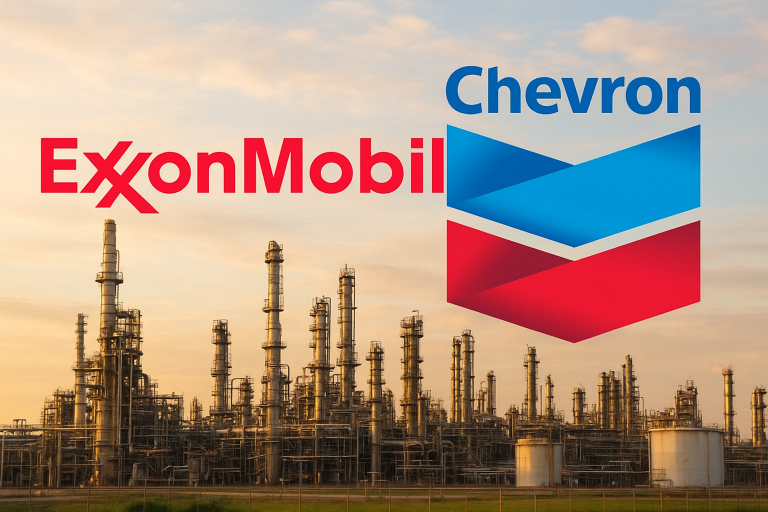Exxon Mobil and Chevron, two of the world’s largest oil producers, reported weaker third-quarter results on Friday as lower crude prices and rising expenses dented profitability.
Despite the downturn, both companies reaffirmed plans to ramp up production, betting on long-term demand resilience even as global oil prices hover near $60 a barrel.
Exxon posts lower profit but maintains aggressive production growth
Exxon’s quarterly profit fell 12% year-on-year to $7.5 billion, or $1.76 per share, missing analysts’ expectations of $1.82 per share, according to FactSet.
“We delivered the highest earnings per share we’ve had compared to other quarters in a similar oil-price environment,” said CEO Darren Woods, referring to periods in the last decade when prices ranged from $65 to $75 a barrel.
The company attributed the decline to softer crude prices, weak chemical margins, higher depreciation, and lower base volumes following divestments.
These factors were only partially offset by robust output growth in key fields.
Exxon’s production in the Permian Basin, the largest oil field in the United States, hit a record of nearly 1.7 million oil-equivalent barrels per day.
In Guyana, where Exxon leads a consortium responsible for one of the most significant oil finds of the century, production surpassed 700,000 barrels per day.
The company returned $9.4 billion to shareholders through dividends and share buybacks during the quarter.
Exxon executives said the company’s balance sheet remains strong, positioning it to sustain investment in growth projects despite near-term market weakness.
Share price of Exxon Mobile slipped by 1.52% during premarket hours on Friday.
Chevron hit by acquisition costs and lower oil prices
Chevron reported a steeper 21% decline in quarterly profit, earning $3.5 billion for the period.
The company’s results were hurt by weaker crude prices and transaction expenses from its $53 billion acquisition of Hess Corporation, completed in July.
Chevron recorded a net loss of $235 million tied to severance and integration costs from the Hess deal.
Revenue fell slightly to $48.17 billion from $48.93 billion a year earlier, though it still topped analysts’ estimates of $47.23 billion.
Upstream earnings dropped to $3.3 billion from $4.59 billion a year earlier, while downstream earnings nearly doubled to $1.14 billion, helped by stronger refining margins.
Chevron’s oil and gas output reached a record 4.1 million barrels of oil equivalent per day, up 21% from a year ago.
The increase was largely driven by production gains in Kazakhstan, the Gulf of Mexico, and the Permian Basin, as well as the integration of Hess’s assets.
Oil majors brace for volatile prices
The weak results from both companies come amid a challenging global energy landscape marked by easing OPEC+ production cuts and growing concerns about an economic slowdown.
The resulting supply glut has kept crude prices under pressure, even as demand remains steady in emerging markets.
Eimear Bonner, Chevron’s finance chief, said the company’s portfolio was well-positioned to endure price volatility.
“We expect we’ll come through that cycle like we always do, and our portfolio is strong and resilient,” she said.
Both Exxon and Chevron signaled confidence in the long-term outlook for oil, emphasizing their plans to boost output in major producing regions.
Still, analysts said sustained weak prices could test that optimism in the quarters ahead.
The post Exxon and Chevron profits dip as oil prices slide appeared first on Invezz

